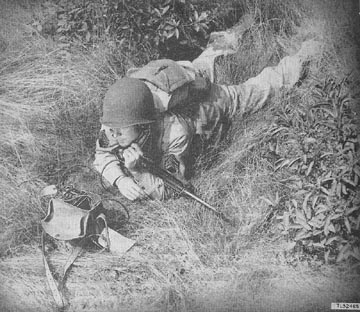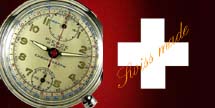 The U.S. Army Field Telephone EE-8B is a portable field telephone designed for use on either local or common battery telephone systems. The talking and signaling range varies with the type of wire used, the condition of the wire (dry, wet, frayed) and whether the wire is on the ground or in the air. As a local battery telephone, a talking range of 18 to 27 kilometers (11 to 17 miles) is typical, suitable for Corps area usage. The U.S. Army Field Telephone EE-8B is a portable field telephone designed for use on either local or common battery telephone systems. The talking and signaling range varies with the type of wire used, the condition of the wire (dry, wet, frayed) and whether the wire is on the ground or in the air. As a local battery telephone, a talking range of 18 to 27 kilometers (11 to 17 miles) is typical, suitable for Corps area usage.
The phones are contained in a case approximately 25 x 20 x 9 centimeters (9.5 x 7.75 x 3.5 inches) weighing about 4.5 kilo (9.75 pounds) including battery. At the start of World War II, the EE-8B in a leather case with a leather strap was standard issue. However, experience in the Pacific showed right away that leather did not hold up and the EE-8B leather case was replaced by an olive drab canvas case with web strap. There’s also an aluminum chassis and sheet steel for later versions of the phone.
At the top of the phone, exposed when the cover is opened, there is a terminal block. All control switches and binding posts for wire are contained on the terminal block. The lever switch is curved and spring loaded so that it is depressed when the weight of the handset is rested on it (EE-8B is off line, switch open). The EE-8B comes on the line when the handset is lifted (switch closed).
A 90-100 volt, 20 Hz hand-cranked ringing generator GN-38 is contained in the case of an EE-8B. The crank is operated from the side of the case. The TS-9-AP Handset connects to the EE-8B and is stored in the case, in an open area accessible when the top cover is open. Two BA-30 1.5 volt D-cell batteries are installed in the battery compartment reached from the terminal block area at the top-inside of the case.

Point to Point Operation of the the EE-8B Field Phone. In point to point circuits, local battery operation is used and the pair of phones on each end of the circuit are connected directly together (no switchboard). The hand-cranked generator is used to signal the other station. Ranges up to hundreds of miles are possible under ideal conditions with high quality wire.
Switchboard Operation of the the EE-8B Field Phone. Switchboards may be used in local battery mode or common battery mode. In local battery operation, thel EE-8B phone is connected to the switchboard which can connect any pair as necessary. The hand-cranked generator is used to signal the switchboard. Several local battery switchboards can be connected together by trunks; any telephone of any of the switchboards can be connected to any other phone. Use of a switchboard in local battery mode reduces the distance that the signals will carry.
Common battery mode switchboard operation involves common battery signaling and local battery transmission. The local EE-8 must have batteries and the handset switch must be operated when talking. The lever switch of the telephone is used to signal the switchboard operator. |



